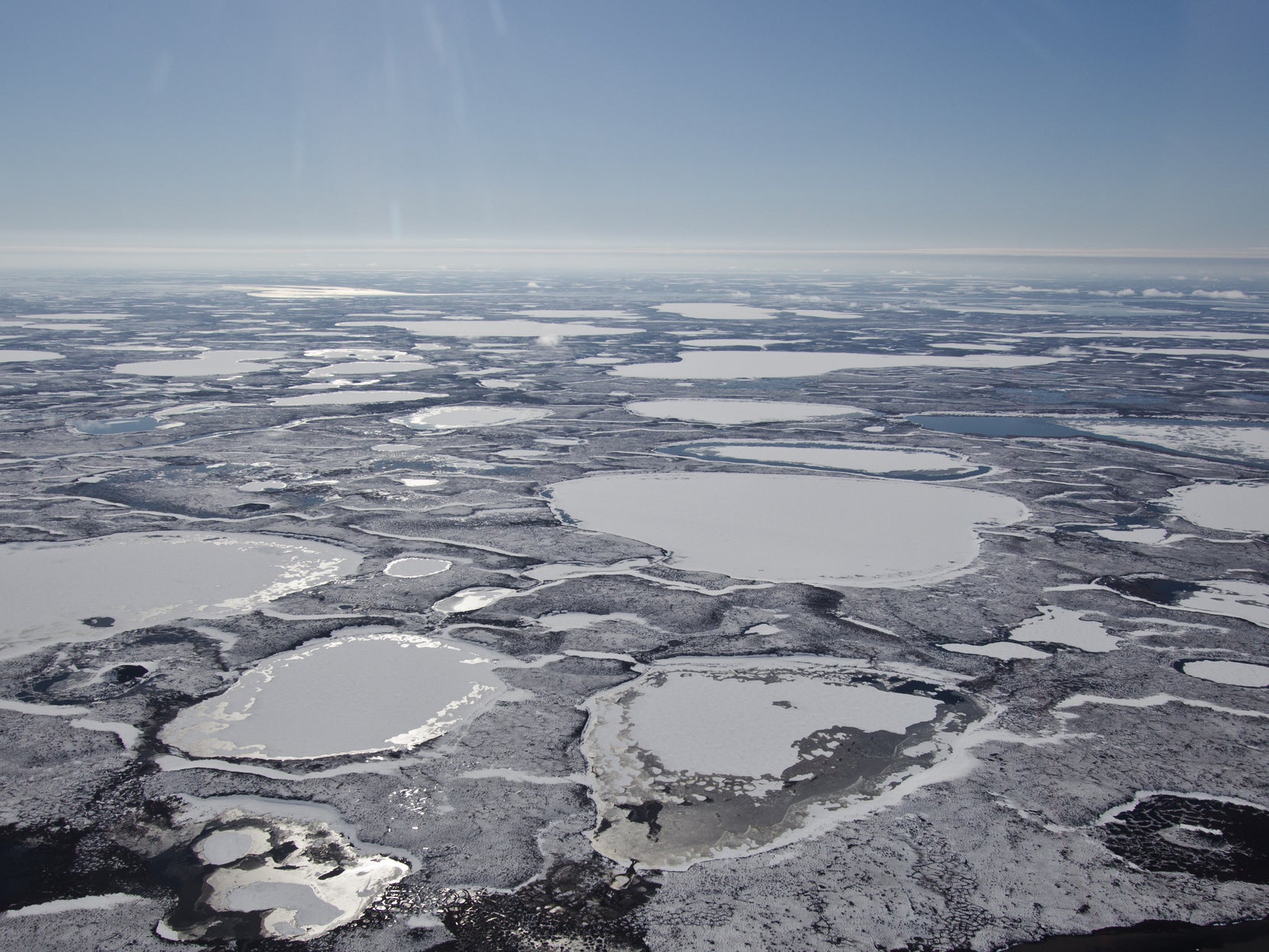Climate crisis: Thawing Arctic permafrost could release deadly waves of ancient diseases, scientists suggest
Researchers have reactivated 30,000-year-old RNA viruses from tundra

Disturbing things are happening in the Arctic.
In the last fortnight a devastating heatwave has seen temperatures in Siberia reach a record 38C (100.4F), meanwhile, vast fires are burning, releasing huge amounts of carbon dioxide into the atmosphere and dramatically illustrating the vicious circle of climate breakdown.
As climate scientists ponder whether these extremes portend the dawn of a terrifying new era of supercharged heat in the Arctic, the planet also remains gripped by the coronavirus pandemic.
It is at this pivotal moment a startling new risk could also be unleashed upon the world – one which binds together both the implications of an overheating planet and the tragedy of a highly contagious disease.
Scientists have said the rapidly warming climate in the far north risks exposing long-dormant viruses, which may be tens or even hundreds of thousands of years old, and have been frozen in the permafrost in the Arctic.
Due to the rapid heating – the Arctic is warming up at least twice as fast as the rest of the world – the permafrost is now thawing for the first time since before the last ice age, potentially freeing pathogens the like of which modern humans have never before grappled with.
Jean Michel Claverie, a virologist at Aix-Marseille University, told Greenpeace’s investigative journalism outfit Unearthed: “The idea that bacteria can survive for very long I think is definitely accepted. The remaining debate is for how long? Is it a million years? 500,000 years? Is it 50,000 years?”
He added: “There are extremely good papers that say yes, you can revive bacteria from deep permafrost.”
Dr Chantal Abergel, also a virologist at the same institution, added: “We are able to revive viruses out of ancient permafrost samples. So far we have not been able to go up to 30,000 years, but it may come at some point.”
So far researchers have been able to successfully reactivate ancient DNA viruses, but not the more fragile RNA viruses.
RNA viruses include diseases such as Spanish flu and the coronavirus responsible for the current pandemic.
DNA viruses include the now practically eradicated disease smallpox.
Another threat is from bacteria – in 2016 an outbreak of anthrax killed thousands of reindeer.

Dr Claverie said the risk was not only due to the thawing permafrost, but also due to the increased human and animal activity in areas which have long been very sparsely populated.
He said: “This is a recipe for disaster because you have humans here and you have the virus when it is fresh. When viruses are released from the permafrost in nature, what happens? They fall into the river. They are exposed to oxygen, which is bad for viruses. They are exposed to light, which is also bad for viruses. And so they will not be revived for very long if they don’t find a host very quickly.”
He added: “If [the viruses] come into contact with a proper host then they will reactivate. So if you put a human in a place with frozen viruses associated with pandemic, then those humans could be infected and replicate the virus and start a new pandemic.”
Join our commenting forum
Join thought-provoking conversations, follow other Independent readers and see their replies
Comments
Bookmark popover
Removed from bookmarks